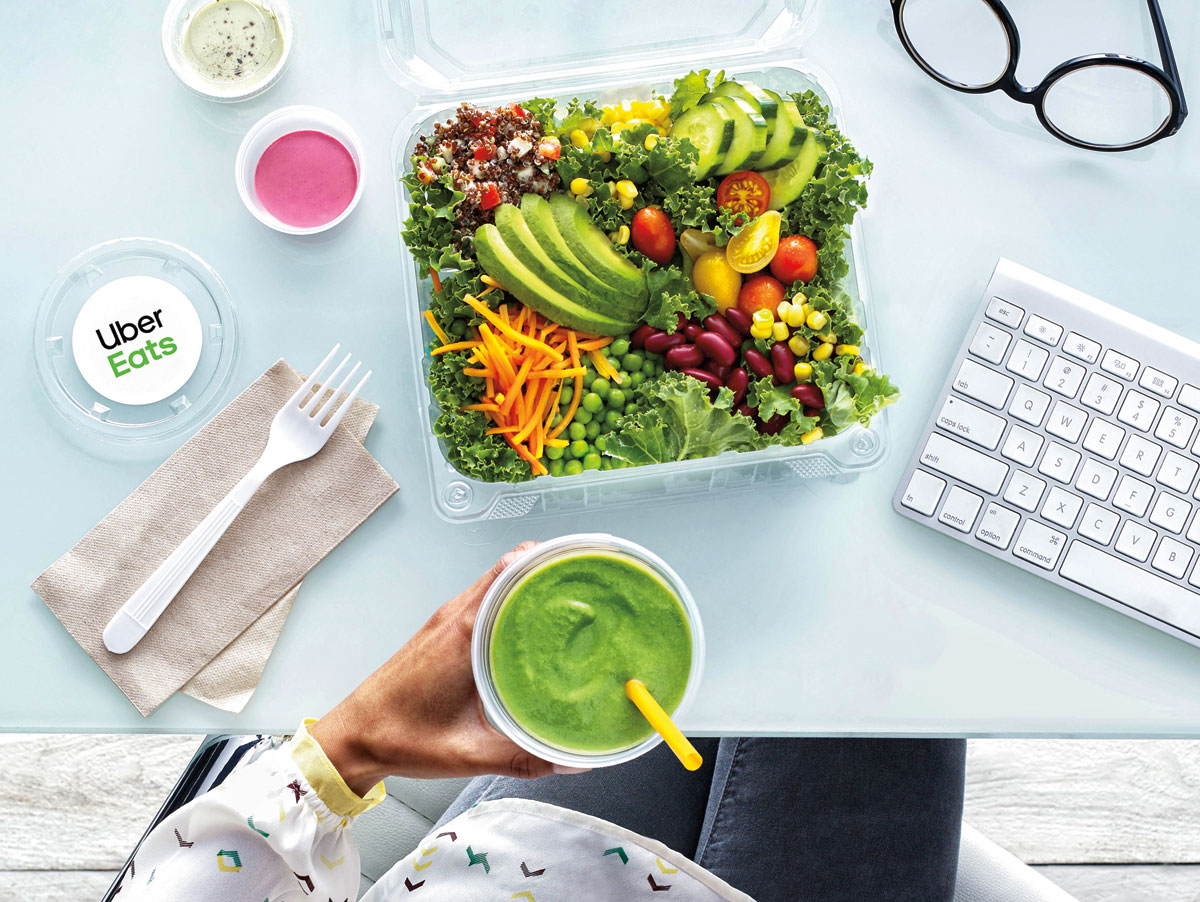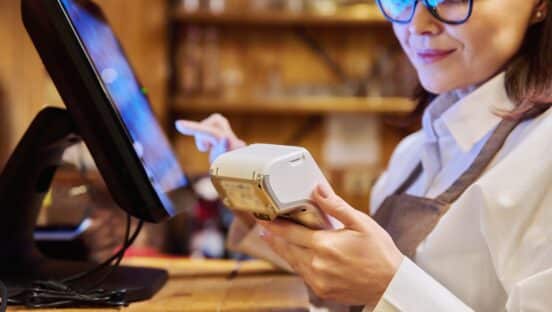Sponsored by Uber Eats.
Americans are increasingly eating at home. Nearly half—49 percent—of the country’s dinners purchased from a restaurant are consumed at home, according to The NPD Group. In the last five years, The NPD Group also notes, revenue from restaurant deliveries has increased by 20 percent, with the overall number of deliveries jumping up 10 percent.
To keep up with this customer demand for off-premise dining, competitive restaurants need to consider how to make pre-order and delivery systems more streamlined. A quality, user-friendly app for guests to order from anywhere and a quick delivery method are key.
Lindsay Holl, manager of off-premise sales at Tropical Smoothie Cafe—which has over 700 franchise locations in 44 states—works with franchisees to set up delivery systems. “Once they begin offering delivery to customers, franchisees are finding delivery ticket averages surpass dine-in ticket averages by nearly 30 percent,” she says.
App-building, however, can be tedious and costly. If there isn’t someone to service the system regularly and be on call in case it breaks. Likewise, hiring drivers can be messy when considering liability and the extra costs of cars, insurance, and pay. For these reasons, many restaurants are turning to third-party food delivery companies like Uber Eats to meet demand.
Why Uber Eats versus other delivery options? Local restaurants can get started quickly with Uber Eats’ easy online sign-up process. Uber Eats’ network of restaurants can all take advantage of the support team and software, as well as a reliable fleet of couriers to deliver food in a speedy average of 31 minutes.
Larger brands can benefit greatly from an Uber Eats partnership, too.
Tropical Smoothie Cafe has been a partner with Uber Eats since the first quarter of 2018. “We knew as a brand that the third-party delivery ‘disrupter’ was not going anywhere, and we wanted to proactively create partnerships with top delivery services like Uber Eats to protect our brand and create a long-lasting beneficial relationship,” Holl says. “By working together, we can gain insight into trends and consumer behaviors outside of our four walls.”
By working with Uber Eats, Tropical Smoothie Cafe has also learned more about its customers than ever before, like where else guests tend to shop once they leave the cafe’s doors. Plus, the brand has seen sales increase. “We’ve seen approximately 60 percent more trial at times like breakfast and Happy Hour,” Holl says. “Delivery also encourages more food sales, literally flipping the in-cafe model upside down, where smoothie sales dominate.”
Nick Crouch, a Tropical Smoothie franchise owner, says the convenience of a third-party delivery system like Uber Eats can’t be beat. “I found that it helped me get business I wouldn’t otherwise get. I’m a believer now,” he says.
Cowen & Co., a diversified financial services firm, only sees consumer reliance on delivery in restaurants increasing. The firm projects U.S. delivery sales to rise an average of 12 percent a year to $76 billion in 2022. That is a 77 percent increase from the $43 billion delivery sales today. If it seems hard to keep up with today, just wait until tomorrow.













